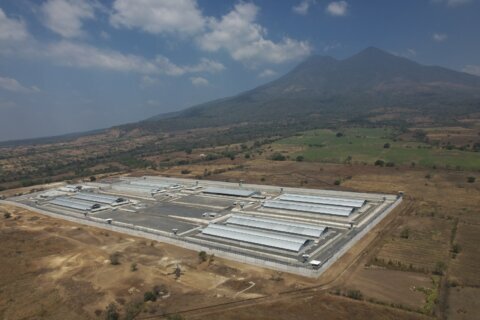Electric vehicles giant Tesla Inc. (ticker: TSLA) is a household name today. At a market capitalization of roughly $730 billion, it’s one of the 10 largest public companies in the U.S.
That said, the stock’s medium-term performance has been lackluster. Despite a sharp rebound in 2023, investors who acquired the stock in late 2020 are basically breakeven, and anyone who bought in at all-time highs less than a year later is still nursing a loss of more than 40% on paper.
The story for long-term shareholders, however, is much different.
[Sign up for stock news with our Invested newsletter.]
How Much Money Would You Have Made if You Invested in Tesla’s IPO?
Tesla went public via an initial public offering on June 29, 2010 at $17 per share. TSLA stock, however, opened for trading at $19 per share, and finished the day at $23.89 — a stellar one-day gain of 40.5%.
Return calculations for what an average investor would have earned can’t realistically assume a purchase price of $17 per share, as retail investors essentially had no way to buy stocks at their actual IPO price in 2010.
In calculating returns, it’s more practical to assume the early Tesla investor purchased shares at its closing price of $23.89. In fact, shares traded below those levels for the majority of normal trading hours, so even this price is somewhat conservative.
If that were all there was to the story, this investment would have walloped the wider market over the last 13 years, rising roughly tenfold.
But due to several aggressive stock splits in recent years, Tesla’s long-term performance is even more impressive. There have been two Tesla stock splits in its corporate history:
— a 5-for-1 stock split on Aug. 31, 2020
— a 3-for-1 stock split on Aug. 25, 2022
To compare apples to apples, this means that the cost basis of the initial purchase price should be divided by 15, as one share of Tesla stock in 2010 would have turned into 15 shares by 2023.
On a split-adjusted basis, then, the closing price of Tesla stock on June 29, 2010, was $1.59.
At market close on July 26, the stock stood at $219.80 — more than 138 times its adjusted closing price on the first day of trading.
A $10,000 investment in TSLA on the day of its IPO would be worth more than $1.38 million as of July 26.
[See: Artificial Intelligence Stocks: The 10 Best AI Companies.]
TSLA Performance vs. the S&P 500
The stock’s remarkable 138-fold return works out to a compound annual growth rate of 41.9% since inception. Over the same time, the vaunted S&P 500 has grown at an annualized rate of 12.4%.
That’s already an enormous performance gulf, but those differences become even more magnified over time. In stark contrast to the $1.38 million the Tesla IPO investor would be sitting on, a humble S&P 500 investor who put $10,000 into the benchmark index on the same day in 2010 would have $51,185.38 at market close on July 26 — just 3.8% of what the early electric vehicle believer would’ve ended up with.
Factors Influencing Tesla’s Meteoric Rise
Plainly put, Tesla’s incredible decade-plus rally has tracked the even more incredible growth of its underlying business. Consider a side-by-side comparison of high-level company metrics back in fiscal 2010 compared to its last reported fiscal year in 2023:
| Revenue (in millions) | Net income (in millions) | Earnings per share | Net margin | |
| 2023 | $96,773 | $14,997 | $4.30 | 15.5% |
| 2010 | $116.74 | ($154.33) | ($3.04) | -132.2% |
The stock’s rapid 138-fold ascent was mirrored by a nearly 830-fold uptick in revenue and a dramatic improvement in profitability.
At the time of its IPO, Tesla was undergoing an ambitious experiment that CEO Elon Musk has since admitted was more likely to fail than succeed. Although hybrid vehicles like Toyota Motor Corp.’s (TM) Prius had been around for some time, they certainly weren’t sports cars and were a far cry from what one might consider luxury vehicles. Mass-producing electric vehicles and making them sexy and desirable was practically a pipe dream, and major automakers neglected the market opportunity, leaving an open lane for Tesla.
Unlike the software industry, scaling in the capital-intensive auto industry is difficult and expensive. To make the most of its first-mover advantage, Tesla had to rapidly grow its production capacity, which it did at a prodigious pace: In 2010, the company delivered less than 1,600 Tesla Roadsters, which was then its only vehicle. In 2023, it delivered more than 1.8 million cars across its five current models — Model S, Model 3, Model X, Model Y and the Cybertruck — none of which existed in 2010.
The last dozen-plus years have also seen the company diversify into areas like insurance, charging infrastructure, and energy storage and generation. Its energy business alone generated $6 billion in revenue last year, or more than 51 times the revenue of the entire business in 2010.
A Word of Caution
What Tesla as a company has done in the last dozen-plus years is nothing short of miraculous, and its stock price has rightfully ballooned along with profits.
And while it’s a nice thought experiment to see what a $10,000 investment in Tesla at its IPO would be worth today, choosing these diamonds in the rough on Wall Street is exceedingly difficult to do in practice.
First, IPOs are infamously bad times to buy. Companies will seek the highest valuation they can when going public, and newly public stocks tend to underperform the larger market in the short and medium term.
Second, it’s just not easy to pick market-beating stocks. A May 2018 paper from Hendrik Bessembinder at Arizona State University found that between 1926 and 2016, the best-performing 4% of public stocks accounted for the entire net gain in the U.S. stock market. The other 96% collectively matched the return of U.S. Treasury bills.
Finally, to reap the enormous rewards an early Tesla investor would be sitting on today, you’d have to keep the faith and hold as the EV innovator lost money year after year for a full decade. It wasn’t until 2020 that Tesla turned its first full-year profit.
If you’re one of the lucky few to have held firm on Tesla throughout the years, kudos! For everyone else, the hunt for the best stocks to buy now lives on.
More from U.S. News
What’s the Best Cryptocurrency to Buy? 6 Contenders
10 Highest Dividend-Paying Stocks in the S&P 500
2024’s 10 Best-Performing Stocks
How Much Would $10,000 Invested in Tesla Stock at IPO Be Worth Today? originally appeared on usnews.com
Update 07/29/24: This story was previously published at an earlier date and has been updated with new information.









